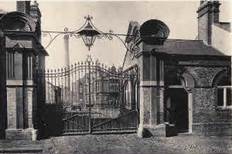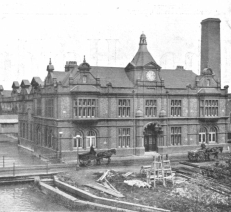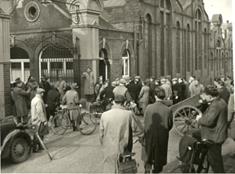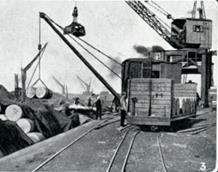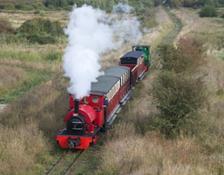Sittingbourne after 1890
Frederick, Edward’s third son, worked in his father’s paper mills and, according to Nigel Lloyd’s family history, managed the Sittingbourne plant and when their father died, Frank was in charge.
Frank continued his father’s work, applying similar methods and expanding it greatly. Enormous additions were made to the company’s physical assets. A second mill was opened at Sittingbourne in 1891 and a US-made machine 137in wide was imported in 1896. Roads and a railway limited further expansion of the site, so Frank bought 500 acres in the neighbouring Kemsley. Two 225in machines were installed and it started operations in 1924.
Thanks to local enthusiasts, one Lloyd legacy remains — the Sittingbourne and Kemsley Light Railway. Edward Lloyd had built a 2ft 6in track in 1889 for horse-drawn wagons to connect the paper mill with Milton Creek where barges moored. Frank Lloyd converted it to steam in 1905. In 1924, it was extended to Ridham Dock, used by sea-going ships, and continued in company use until 1969 when Bowaters converted to transport by road.
The SKLR had to fight battles to keep it open in 1970 and again in 2008 when the last company to use the Sittingbourne Mill, Metsä Serla, sold up. It is now a very successful attraction for visitors and still uses the old company rolling stock. It is commemorated in a mural on the wall leading to the SKLR Viaduct station.
Edward Lloyd used Thames sailing barges moored in Milton Creek. Three were named after the first of his and Maria’s children, the Annie Lloyd, Frank Lloyd and Alice Lloyd.
As the company’s export trade grew, the convenience of a nearby port for sea-going ships became apparent. Lloyds began to build Ridham Dock, six miles from Sittingbourne and one mile from Kemsley, in 1913 but it was requisitioned the following year to ship supplies to the Western Front. The Navy completed the building work in 1919 and Lloyds regained it in 1922. The railway linked both Lloyd plants to the dock.
Edward Lloyd was a good employer and Frank adopted even more enlightened methods. A works committee consisting of representatives from each division met a management representative monthly to consider conditions of work and staff suggestions on safety.
In the early 1870s, a sickness and funeral benefit society was set up for the workforce. In 1912, it had 500 members. In 1929, it covered healthcare, widows’ allowances, a fully equipped ambulance service and a fire brigade.
Frank Lloyd was an active philanthropist and devoted further resources to the lives of his staff. The plant at Kemsley included a model village. The plan was for 750 houses, but he died before they were all completed. The village was self-sufficient, with its own sewerage system, and included sports grounds, pavillion, library, club house and concert hall. It later passed into local authority ownership.
The Sittingbourne operations were bought from Bowaters by Metsä Serla, the Finnish paper company trading as M-Real, in 1998. It closed them early in 2008. The water tower was demolished separately in 2012. All other traces of the Lloyd operation had been obliterated in 2010.


